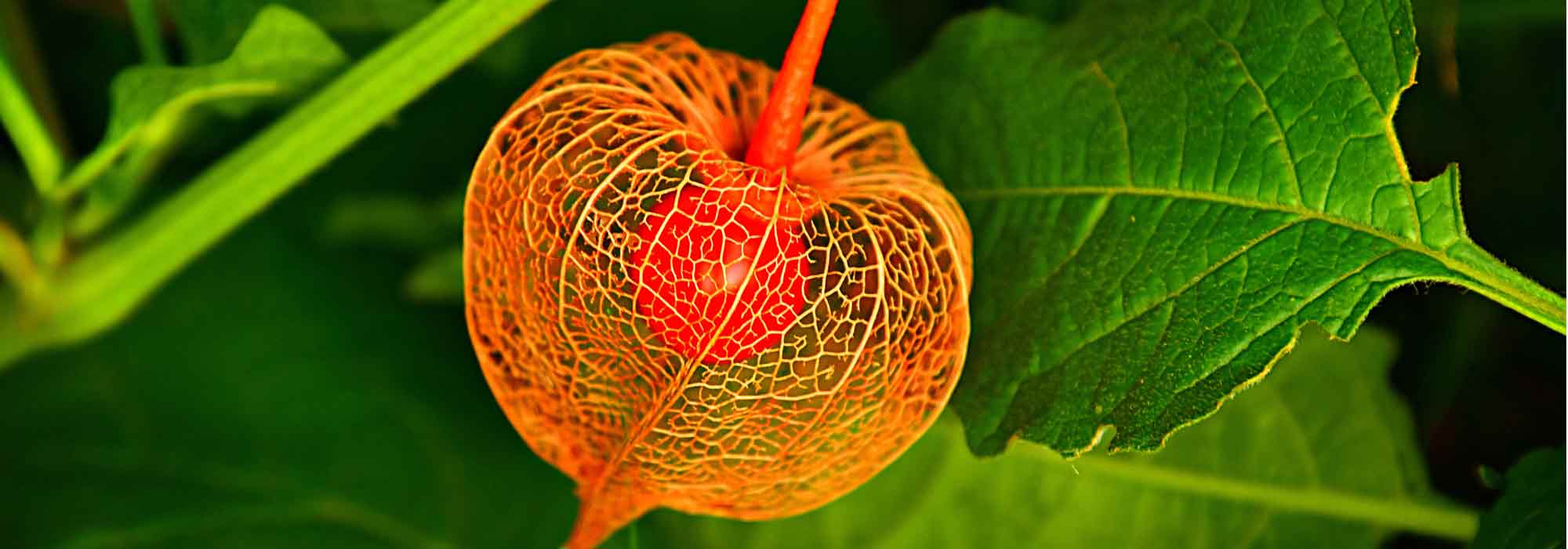
Physalis: sowing, growing, harvest
Contents
Physalis in a nutshell
- Physalis is a nightshade that produces fleshy and juicy berries</strong with a taste of mandarin
- When consumed unripe, the berries of the physalis are toxic. They must be harvested perfectly ripe
- Frost-sensitive, the Cape gooseberry is grown as an annual in our latitudes, although it is originally a perennial
- Growing it is very easy in rich, well-draining soil, and in a warm, sunny location
- This plant can become invasive in mild climates, as the physalis needs space to thrive
A word from our expert
Physalis has been cultivated in Peru for millennia, where it is regarded as a food plant due to its edible berries at ripeness, which are very rich in vitamin C and minerals. Introduced to France in the late 19th century, this American perennial is grown as an annual in the hexagon.
Its yellow-orange to purple fruits, depending on the varieties, are similar in size to cherries and are encased in a calyx. The name of this plant comes from the Greek physalis, meaning “bladder,” referring to the shape of the latter. The berries have a tangy, slightly sweet and fragrant flavour, and are generally consumed raw, in compote, or as jam. Very aesthetic, they are often used to decorate pastries.
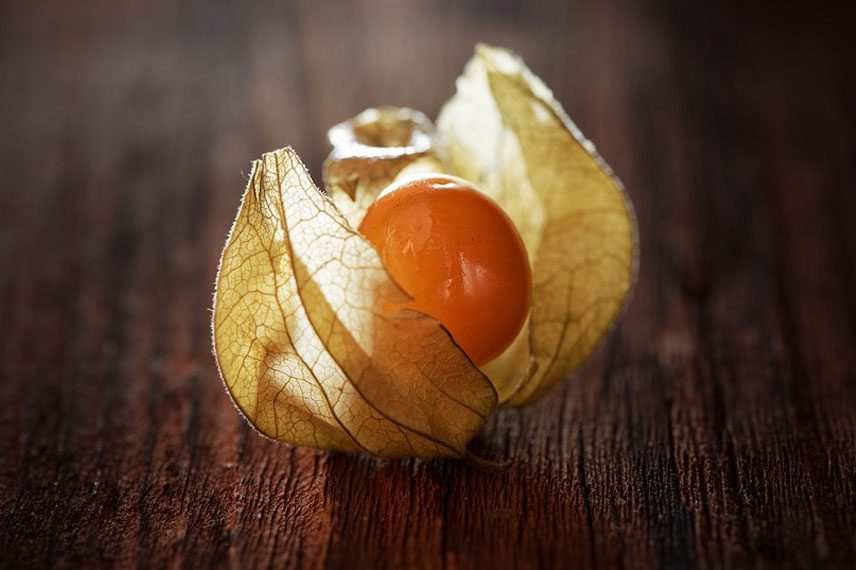
Easy to cultivate as long as it receives enough warmth, cape gooseberry thrives in all types of soil and can even become invasive under the best conditions, particularly in regions where winters are frost-free.
Description and botany
Botanical data
- Latin name Physalis peruviana, Physalis pruinosa, Physalis ixocarpa
- Family Solanaceae
- Common name Physalis, Cape gooseberry, Love in a cage, Coqueret du Pérou, Tomatillo
- Flowering June to July
- Height 60 to 80 cm
- Exposure sunny, bright
- Soil type rich and well-drained
- Hardiness frost-sensitive
The physalis, commonly known as Cape gooseberry, Love in a cage, Coqueret du Pérou, or Tomatillo… (names vary depending on the varieties) is a perennial with a creeping rootstock native to America, and belongs to the Solanaceae family.
The physalis is an herbaceous plant with upright stems that branch little, and does not exceed 60 to 80 cm in height, reaching a maximum of 1 m. The green, petiolate leaves are ovate in shape, with either dentate or smooth edges. Flowering occurs between June and July, and takes the form of solitary white flowers on long peduncles that emerge in the axils of the leaves, on the upper part of the stems.
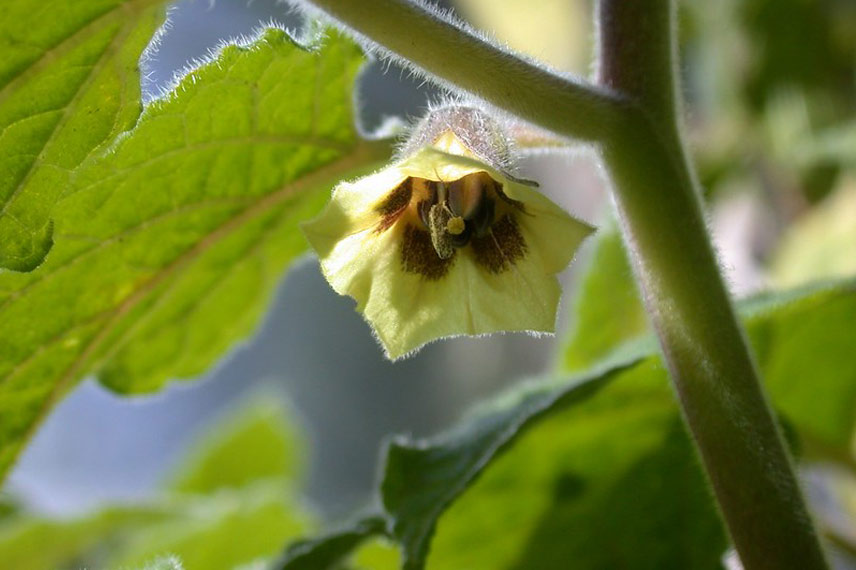
© Graibeard – Flower of Physalis peruviana – Flickr
In autumn, the flowers give way to a very ornamental fruiting. The physalis berries are enclosed in a membranous husk that ranges in colour from orange to scarlet, measuring between 3 and 5 cm long. This husk consists of a calyx shaped like a lantern or paper lantern, which is both enveloping and fused, and persists in winter on the dried branches. As it dries, the wall of the calyx becomes very thin, and turns into a reticulate pattern of veins that reveals the fruit: a berry that can be golden, orange, or even purple, depending on its variety.
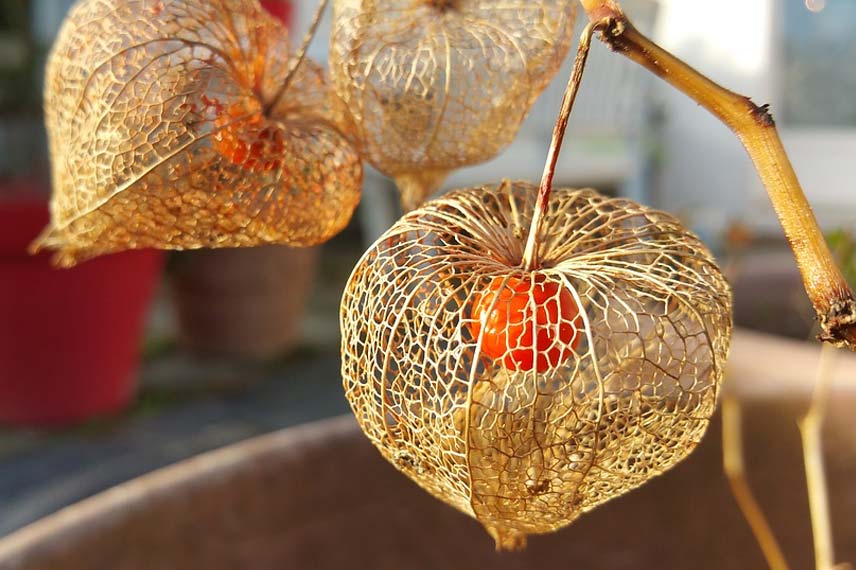
There are three main varieties of physalis with edible fruits:
- The Peruvian physalis, Physalis peruviana, also known as Coqueret du Pérou, has large, hairy leaves and a bushy habit. It is considered the most beautiful of the three varieties. Its fruits, enclosed in a lantern-shaped calyx, are yellow-orange berries the size of large cherries or even small apricots.
- The plum-flavoured physalis, Physalis pruinosa, also known as Ground cherry or Cape gooseberry, has a prostrate and creeping habit. The fruits are very similar to those of the Coqueret du Pérou. The only notable difference is that the size of the berry is slightly smaller.
- The Mexican physalis, Physalis ixocarpa, also known as tomatillo, is low-maintenance and highly productive. Its fruits are purple or green depending on the variety. Tomatillo flowers are self-sterile. A minimum of two plants is required for fruiting.
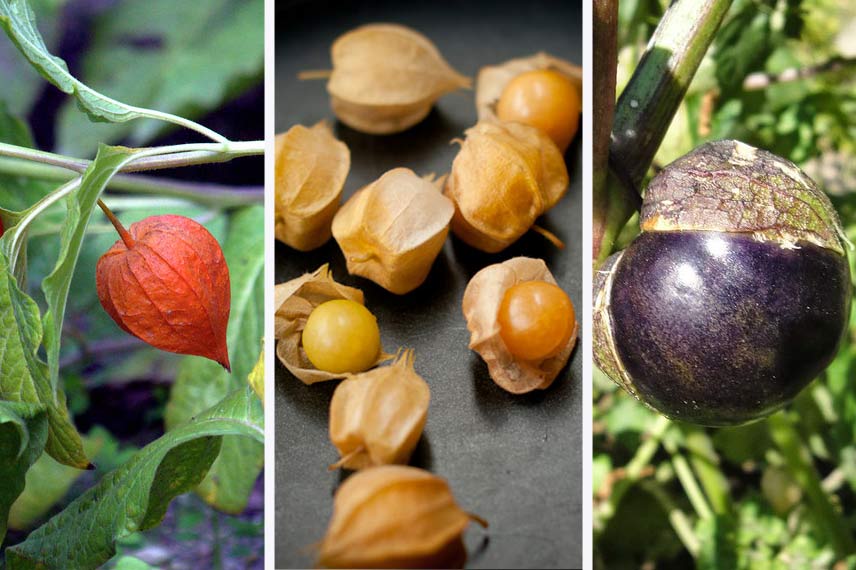
1. © manuel m. v. – Physalis peruviana – Flickr | 2. © Eliza Adam – Physalis pruinosa – Flickr | 3. © Vahe Martirosyan – Physalis ixocarpa ‘Purple de Milpa’ – Flickr
Mature physalis berries are rich in vitamins A and B, but especially in vitamin C. They are also an interesting source of beta-carotene when fully ripe.
Read also
Cultivation of physalisMain species and varieties
Our best varieties of Physalis
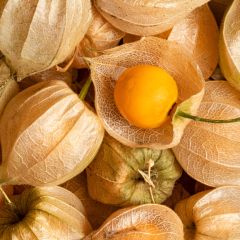
Physalis edulis - Ferme de Sainte Marthe seeds
- Flowering time June to October
- Height at maturity 1 m
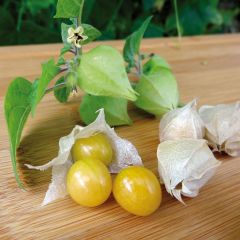
Physalis pruinosa Preciosa
- Height at maturity 60 cm
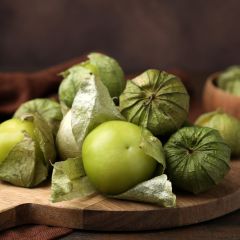
Mexican Tomatillo - Ferme de Sainte Marthe seeds
- Flowering time June to September
- Height at maturity 1 m
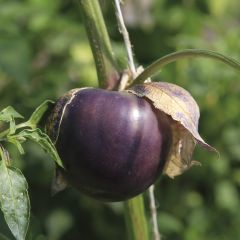
Mexican Tomatillo Purple Xtrem
- Height at maturity 60 cm
Discover other Physalis
View all →Available in 1 sizes
Available in 1 sizes
Available in 2 sizes
Available in 1 sizes
Available in 1 sizes
Available in 1 sizes
Available in 1 sizes
Available in 1 sizes
Sowing and planting of physalis
Where to install Physalis?
Physalis can thrive in all types of soil, but they particularly favour rich, well-draining soils. As a tropical plant, it also requires warmth and a well-lit location to bear fruit abundantly. Therefore, install your physalis in a sunny space, ideally protected from cold winds.
If you live in a cool region, it’s best to grow your physalis under cover to ensure good harvests. However, be aware that this plant needs space. Allow at least 80 cm between each physalis plant, or with other plants.
When and how to sow Physalis?
Sowing physalis is best done in March, although plants grown in a greenhouse can be sown as early as February. Sow the Cape gooseberry warmly, between 18°C minimum and 20°C ideally. The germination of physalis seeds is relatively slow, as it can take up to 3 weeks.
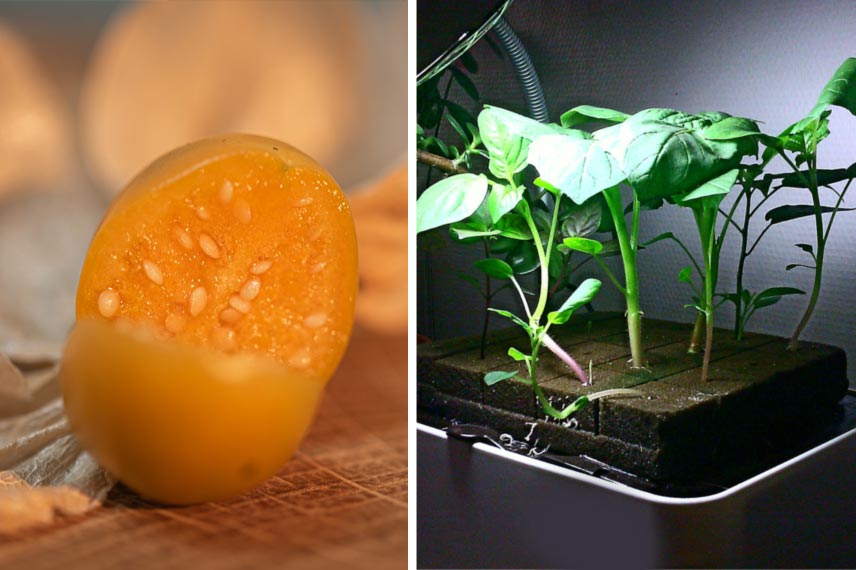
© mannewaar – Flickr
Sowing in pots
- Fill pots or trays with special sowing compost.
- Place the seeds on the substrate and press down very lightly.
- Cover with a light layer of the same compost.
- Water using a watering can with a rose.
- Transplant when the seedlings reach 3 to 4 leaves.
Sowing directly in the ground
- Sow in place between May and July in well-warmed soil (the perfect temperature is around 19°C).
- Every 30 cm, bury the physalis seeds under ½ cm of soil.
- Water with the rose of the watering can.
- At the 3 to 4 leaf stage, thin out to keep only one vigorous plant every 90 cm to 1 m in all directions.
- Continue to water them regularly.
Tip: soak your physalis berries in a glass of water before removing the flesh around the seeds intended for planting. This will greatly facilitate the process.
When and how to plant Physalis?
Transplant physalis plants into the garden at the 3 to 4 leaf stage, and when all risk of frost has passed. The best time to plant the Cape gooseberry in the garden is generally after mid-May (varies by region). It is also possible to transplant the plant into a large pot intended for a balcony or terrace.
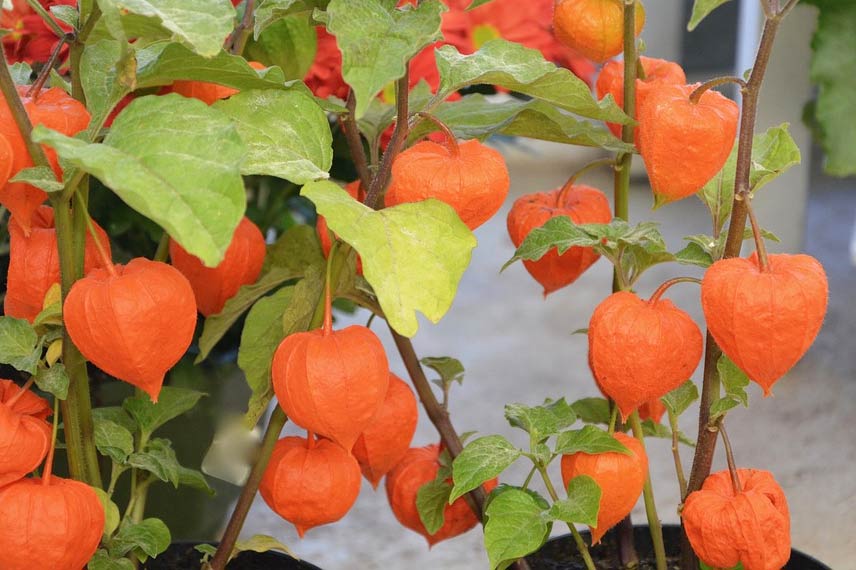
- Start by loosening the soil to break it up well.
- Dig your planting holes ensuring they are spaced about 1 m apart in all directions.
- Each hole should be 3 cm deeper than the root ball of the physalis.
- Place the plant and backfill with garden soil.
- If the soil is sandy, firmly pack the substrate against the base of the physalis plant. If the soil tends to be dry, dig a slight basin around the plant to optimise rainwater.
- Place a thin layer of mulch made of well-matured compost around the base.
- Water generously.
Good to know: a stake should be provided as soon as the coqueret du Pérou is planted. However, the tomatillo does not require staking as its habit is naturally creeping.
Read also
14 unusual fruitsHarvest, storage, and use
Harvesting
First and foremost, know that while physalis generally offers an abundant yield, its fruiting and the ripening of its berries are slow. On average, expect to wait around 120 days to enjoy the very first berries. Physalis is typically harvested between the end of summer and the beginning of autumn (September to October), once the calyx is dry, or when the berries fall to the ground on their own. The harvest can even extend into November if you live in a region with a less favourable climate for its fruiting. However, early varieties can be harvested as early as July.
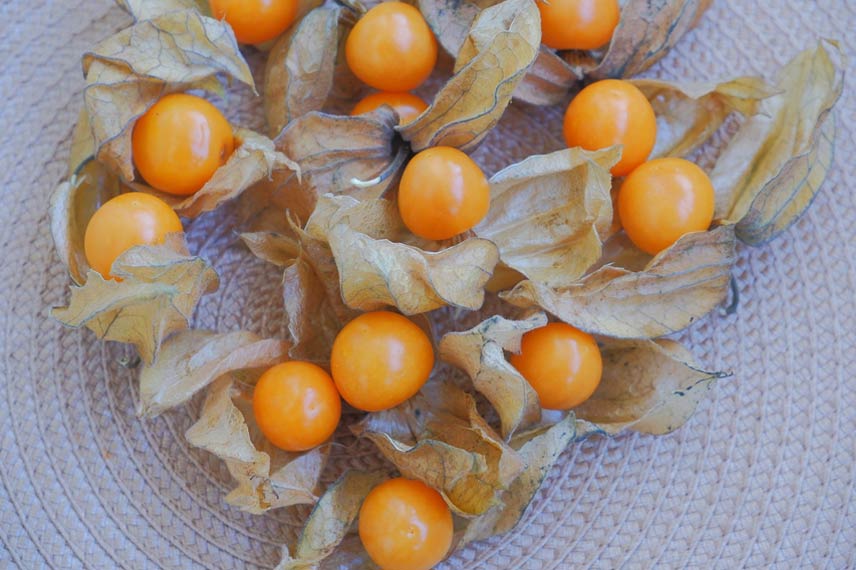
Not hardy, physalis does not survive the first frosts of winter. Once these occur, the fruits left on the bush are lost.
Physalis berries should be harvested and consumed when fully ripe. Indeed, green berries should not be eaten as they are toxic. Regardless of their colour, the fruits are ripe once their husk, which has turned brown, opens up.
As the berries are very delicate, harvesting is always done manually and with care.
Storage
Physalis berries have good storage capacity, provided they are kept in a cool, airy room. Under such conditions, you can store them for up to 4 or 5 months. However, note that after such a long time, the fruits will lose some of their flavour. Also, be careful to prevent them from moulding.
Culinary uses
The fruits of physalis are often used as decorative elements. They adorn pastries. However, with their tangy flavour that lies somewhere between tomato and gooseberry, these little fruits can be eaten raw and plain, added to fruit salads, or cooked into jams, compotes, jellies, or even clafoutis.
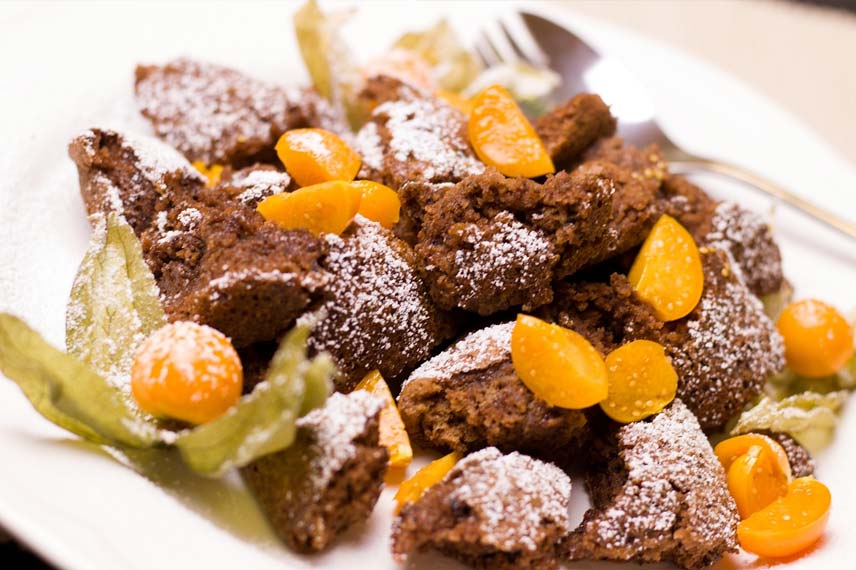
While some varieties are used in sweet preparations, others, especially tomatillos, are incorporated into savoury dishes that benefit from their tangy flavour. Thus, tomatillo is the central ingredient in salsa verde, an iconic Mexican sauce. It is also used cooked in ratatouille or any dish based on tomato and garlic.
In phytotherapy
Physalis is used in phytotherapy and traditional medicine for its numerous virtues.
Indeed, the berry of this plant is rich in active principles (physaline, alkaloids, organic pigments) capable of accelerating the elimination of uric acid. Physalis is thus used in cases of kidney disorders and urinary tract conditions. It is also recommended for rheumatism or gout. Physalis berries are then consumed as an infusion.
→ Also read our tutorial Physalis tea: an autumn-coloured infusion.
Care and maintenance of Physalis
Physalis is a perennial plant in its native warm climate, which cannot withstand frost, and must therefore be grown as an annual in our regions. It is reseeded each year to enjoy its abundant, albeit late, production of berries. Furthermore, to ripen properly, the fruits of the physalis require heat at the end of the season. In the event of an early return of cold weather, the entire yield can suffer. Be aware that it is possible to keep your physalis plants for longer by growing them in pots and sheltering them in a space with a temperature of 15°C in winter. However, with this method of cultivation, the plants of Cape gooseberry lose some of their vigour and become more fragile. In regions with very mild winters, you can also leave your physalis in the ground from one year to the next, provided you protect the plants in winter with a layer of dead leaves (an effective and economical protection).
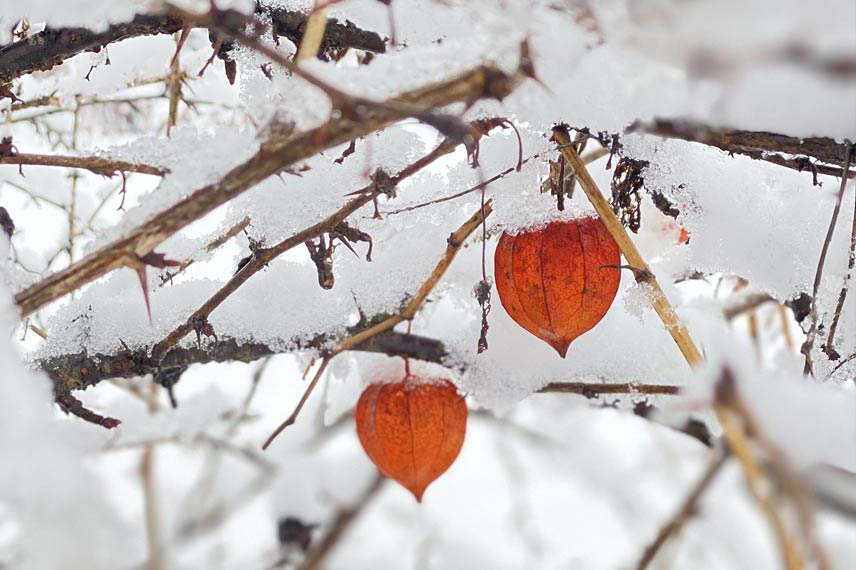
Aside from its need for warmth, the physalis requires no special maintenance once well established. It does not need to be pruned, but can be staked if you notice that the plant is becoming very tall, to prevent the branches from breaking under the weight of its many berries.
The physalis can also be hoed or mulched to prevent weeds from developing at its base. Mulching is a very good solution to limit your interventions and weeding chores.
The physalis has low water requirements. On the contrary, excessive watering may encourage vegetative growth at the expense of fruiting. Water it occasionally when the weather is dry for extended periods.
Diseases and potential pests
When grown in a greenhouse, physalis is prone to whitefly attacks. It may also be subject to aphid invasions. However, apart from these two pests in the vegetable garden, physalis is not threatened by other pests. To eliminate aphids, spray the leaves of your plants with peppermint manure or water mixed with black soap.
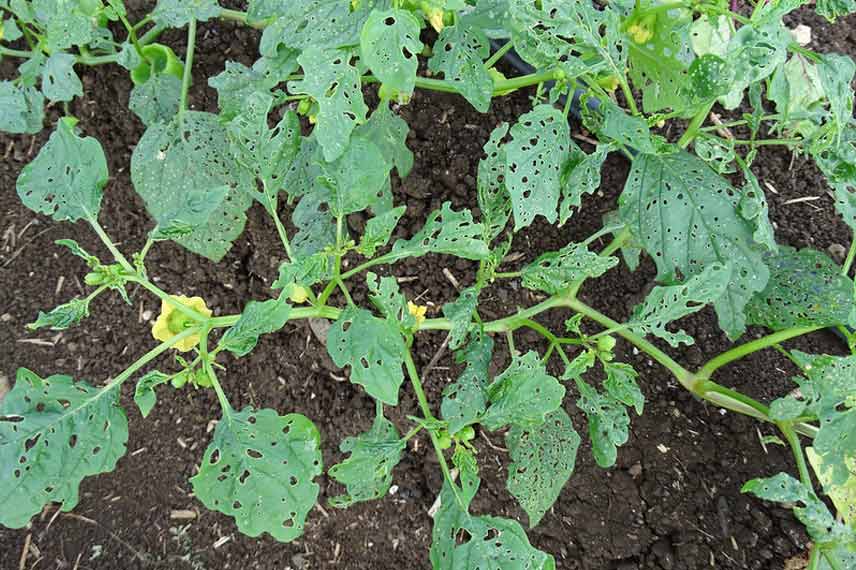
© Scot Nelson – Flickr
There are no specific diseases known to affect it. However, it can be affected by rust, a fungal disease caused by a fungus. To reduce the risk of infection, avoid overhead watering and ensure to maintain the recommended planting distances. If your physalis plants are affected by rust, treat the issue with Bordeaux mixture sprays.
Multiplication of Physalis
As we mentioned earlier, physalis can be propagated by sowing. You can also proceed by clump division by slicing it with a spade, or by propagation by cuttings.
Propagating Physalis by cuttings
- Select a stem about 5 cm long and cut it just above a leaf.
- Remove all flower buds and leaves present at the base.
- Prepare your pots with cutting compost.
- Plant your physalis cuttings in them, and firm the compost around the cutting.
- Spray a little water on the base of the cutting.
- Place them in a warm location between 20 and 25°C.
Pairing Physalis
Physalis pairs well with carrots, such as the Carentan carrot, artichokes like the Vert de Provence artichoke, aubergines, including the Bonica F1, beetroot, such as the Burpee’s Golden beetroot, or even Lemon basil and Compatto dill.
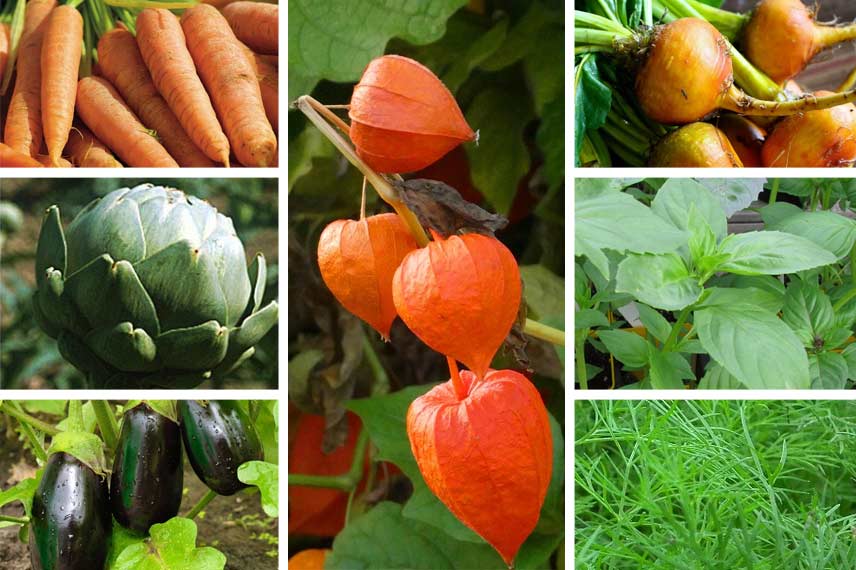
Useful resources
- Discover a wide range of physalis on the Promesse de fleurs online store.
- Find all our tips for growing physalis in the vegetable garden.
- Check out our article: 14 unusual fruits
- Subscribe!
- Contents






























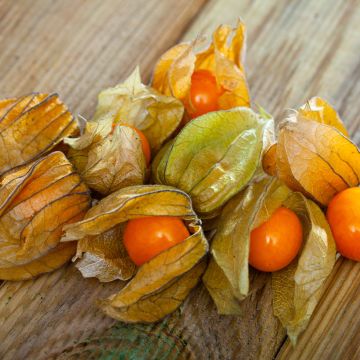

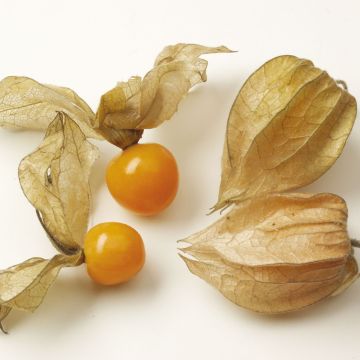
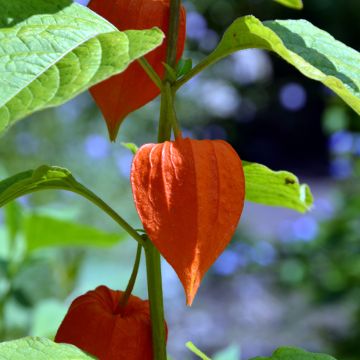
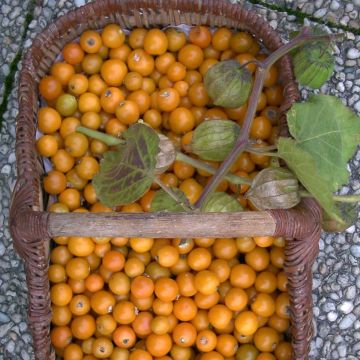


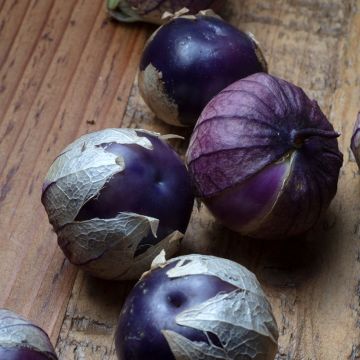
Comments